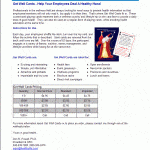Should your club jump on the live video bandwagon? Services like Facebook Live and Periscope have upped the ante on video by taking it to the streets, in the moment, when and where things are happening. Whether or not you should start streaming is a question of content, not popularity or even technology.
Live video is just another marketing and customer service channel. It’s the best way to communicate some content — and a terrible way to communicate other content.
These four questions help you decide when and where live video’s a smart choice:
- Is it timely?
- Is it authentic?
- Is it relevant?
- Is it spontaneous?
When to use live video
When it’s timely
Sometimes unique marketing opportunities arise without warning. You have to act fast or the moment is lost. Remember the Oreo tweet during the famous 2013 Superbowl XLVII blackout? When something happens that’s supremely interesting to your members, taking days or weeks to develop a professional video is much too long.
One of our wellness center clients has been going through a lengthy renovation process at their most popular facilities. Members were anxiously following their progress and super-interested in updates — would the renovations ever get started? Did they have permits yet? What would change? Would new equipment be added? What fabrics? What colors? What kind of lockers and benches? And on…and on…and on.
Email updates and photos posted on Facebook aren’t bad, but quick live video updates shared on social are even better ways to update people fast. Even when the news is just your club manager saying “Today I learned more about how concrete is poured than I ever wanted to know, and the bottom line is that we’re not going to…blah…blah…blah.”
It keeps retention strong during renovation — which can be challenging during periodic facility closures. Even better, it attracts interest from people who aren’t even members…yet. (Remember, very few people actually watch your live videos, live. Most of them still end up watching the recorded version.)
Live video can also be a great way to handle customer service issues, especially if it’s affecting lots of members and you can’t talk individually with each one.
Southwest Airlines had a major outage earlier this summer. Their customer service team used Facebook’s Live Video to give frequent, fast updates that were very well-received. They hadn’t planned ahead that they’d do this — they just tried it out of desperation…and it worked!
Frequent updates on anxiously awaited developments function as a damage control channel and get your team out in front of your customers.
A large health club experienced severe roof damage and flooding from hail. Many members were furious and couldn’t believe that the damage was so bad that they couldn’t fix it fast and re-open right away. A quick walk-through on live video is an excellent way to show people what’s going on.
When it’s authentic
Live video is fundamentally raw and unedited. It lets people see who you really are, sometimes warts and all.
Say you’re streaming your CEO leading a quick walk-through of your club. You suddenly notice a used towel on the floor while she’s talking to the camera.
If she sees the towel and simply leans down, picks it up, and tosses it in a handy hamper — no problem. That’s a great, humanizing moment that says volumes about your club’s attention to detail at every level of the organization.
Authenticity, in that example, carries far more weight than the spit-and-polish of a professional marketing video that talks about “sparkling-clean locker areas.”
(On the other hand, if the towel just sits there…and sits there…as she talks, that’s probably not the moment you wanted the world to see.)
When it’s relevant
Sometimes it’s important to step forward and let the world know how your fitness business sees things. Are you appalled at the new bazillion-calorie entree at Cheesecake Factory? Do you feel strongly that “food shaming” needs to stop? Are you thrilled that calorie limits on school-provided lunches may help in the fight against childhood obesity? Are you concerned that calorie limits on school-provided lunches may disadvantage athletes?
The key is to make smart decisions about when, where, and why you made your voice heard.
Remember — your viewers aren’t your family and friends. They may not share your politics or other personal opinions about hot-button topics unrelated to your business. Don’t bet your company’s future on irrelevant messages that can backfire, offend or cause a social brush fire.
When it’s spontaneous
Health and wellness businesses have lots of opportunities to share spontaneous, live video of members and clients having fun and feeling great about themselves. You can also feature staff in interesting ways. These are ideal applications for live video. A few examples:
- Celebration parties when everyone enrolled in a weight loss or personal training program completes the program
- Finish line celebrations at any kind of fitness or sporting event (pro tip — events with kids are always a hit on video)
- Trying out fun new facilities or classes, like climbing walls, surfrider pools or new fitness dance classes
- Impromptu, unscripted interviews with members about a particular topic — favorite/least favorite vegetable, for example
- Health fair, open house, conference or trade show floor streams — especially of product demos, fitness demos or anything else with great visuals
- Behind-the-scenes at your business — what’s involved in keeping the pool clean, video of the crates of fresh produce being delivered at 4 a.m. to your cafe
You’ll get genuine, heartfelt emotion, without the phoniness present in so many customer testimonials and staff bios.
When NOT to use live video
When it’s content- or graphics-dense
If you want to show off your the new hardwood floor in your yoga studio, share graduation celebrations for your weight loss program, or introduce your new Nutrition Director, stream it live.
On the other hand, if you’re discussing complex information, like statistics, or providing, say, detailed instruction on the glycemic index as part of an eight-week certification program, invest time and money on professionally produced video that will be a true asset for your business.
When the environment isn’t suitable
Viewers will skip right past your video stream if the audio is muddled, the picture’s jittery, or the images are dark and unrecognizable. Evaluate the suitability of your environment for live streaming.
When every word matters
When you’re launching a major marketing campaign, nothing goes out the door until every word is vetted in a conference room, reviewed by multiple executives, and polished a hundred times. People argue over detail — is the model in the campaign sweating enough? Or too much? Should that sentence really begin with “But”? And so on.
If it’s critically important that every single aspect of your marketing message be optimized, live video’s not usually the best answer. Instead, choose communication channels that let you decide in advance exactly what needs to be said, sequence it, and present it in the very best possible light.
When it’s not well-planned
Even live video requires planning. Say you want to get quick sound bites from members of your triathlon training program about their first open-water swim. You still need to decide when and where to conduct interviews, who to talk to, and how things are going to look when they go live. What will you say at various points in the video? Are you going to be the person with the smartphone doing the streaming, or will someone else do that? How will they know when to press the “Go Live” button and when to stop? What words will you say to wrap up the session?
When your delivery skills are lacking
Live video’s not for everyone. Get some feedback on whether you have a tendency to ramble, look away from the camera, or fill “dead air” with filler words like “um”, “in essence”, “you know?”, “what I’m saying is” and so on. Either get professional coaching, or get someone who’s better at doing live videos.
If there’s no one better suited to do the video than you, and you need significant time to gather your thoughts, consider not going live, and instead spend time on a more carefully produced video that makes the best of what you have. There’s no harm in tailoring your message to your ability to deliver it, or saving your “rough-cut genuineness and enthusiasm” for in-person meetings.




